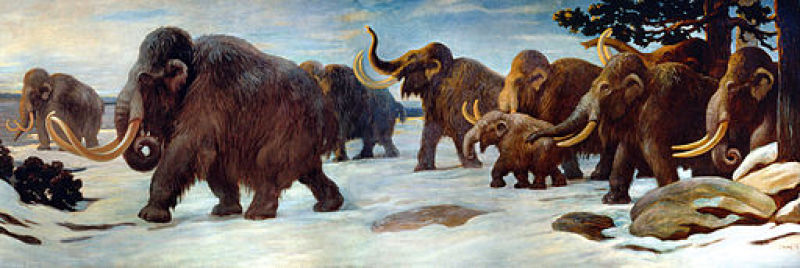
A team of researchers from Russia studying the bones of a mammoth claims that they have found evidence of humans living in the Arctic 45,000 years ago.
According to lead researcher Vladimir Pitulko of the Russian Academy of Science, the markings on the massive animal's bones suggest that the mammoth was hunted down by the first human settlers in the region.
Pitulko noted that the bones of the animal had scars that were most likely made by early hunting tools. It tusks were also broken, which could mean that they were used to create new weapons or items.
"[These injuries] are clearly related to the death of the animal, which was killed and then partly butchered," Pitulko said according to Live Science.
The researchers found the remains of the animal in Siberia. The exact site is near the now-submerged Bering Land Bridge, which used to connect Russia and Alaska before it went underwater. This means that the early settlers of the land might have used this bridge to travel across these regions.
"Finding them not too far from the open gate means they would probably use it," he said according to USA Today. "This area is almost unexplored even now...Someday we will find better material, definitely."
Prior to the discovery made by Pitulko's team, it was believed that humans first existed in the region 35,000 years ago. But, by subjecting the bones of the mammoth through radiocarbon dating, the researchers said that the animal died 45,000 years ago. This clearly indicates the presences of humans at that time.
According to experts who were not part of the study, including Daniel Fisher from the University of Michigan and John Hoffecker of University of Colorado, the markings on the bones of the animal suggest that the hunters were humans and not Neanderthals.
However, archaeologist Robert Park of Canada's University of Waterloo commented that the evidence discovered by Pitulko and his team should not be considered as a basis for human presence in the Arctic 45,000 years ago. For one, the animal died with its fat hump still intact. If hunters were really responsible for its death, then they would have taken the fat as this can still be used as a source for food and fuel for fire, the Washington Post has learned.



















